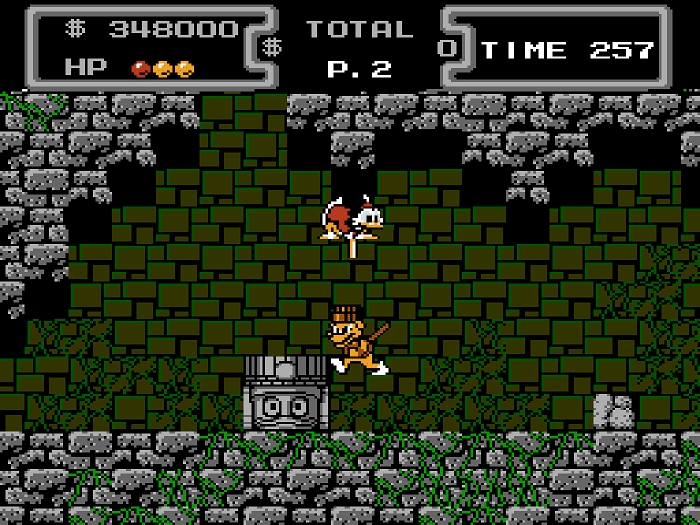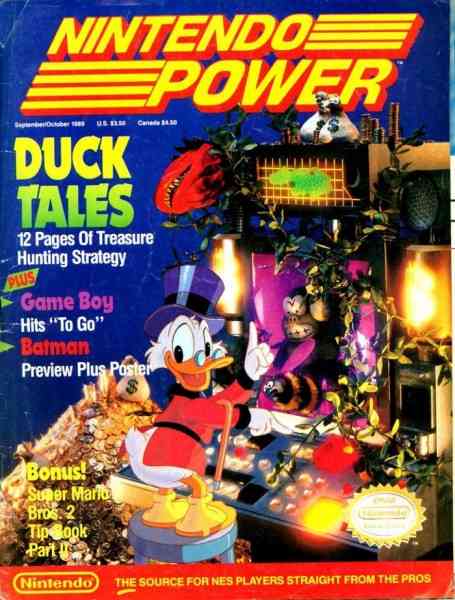Welcome to Part 3 of The Retro Review Series’ third episode, covering DuckTales. If you’re just joining us now don’t forget to check out part one ‘The Intro‘ and part two ‘The History‘ before diving in here!
Unlike the last two games covered in The Retro Review Series, DuckTales is not all about the story, but the small amount of story to be found is a hilarious concept, especially when taking into account the Japanese title. Scrooge McDuck is the richest duck in the world. His rival, Flintheart Glomgold, is trying to gather more money, to overthrow Scrooge’s championship reign, so Scrooge sets off on a globetrotting adventure to find treasure, and cement his title in place. Rarely is a protagonist so immensely driven by greed! Really all there is to the story is that, because Scrooge is greedy, you’re gathering as much treasure as you can.
DuckTales was built on the Mega Man engine, and like Mega Man, the player can choose which order they’d like to play each of the game’s five levels. The level design is non-linear, and there are many many secrets to be found in each one. The levels all have treasure scattered throughout, and a $1,000,000 treasure at the end. Beating the game is not a simple matter of completing each level. There are barriers that require Scrooge to have gained enough money to pass, or require items from other levels to pass. Once all five levels are beaten, the player has to return to one of the levels to face the final boss. This unique design gave DuckTales an air of mystery, which I found very intriguing. There are also multiple endings to the game: one normal for completion, one “good ending” for completing the game with every secret found, and over $10,000,000 to your name, and one “bad ending” for finishing the game with $0 (arguably the more difficult of the two secret endings to achieve).
As I mentioned before, DuckTales is a platformer, but what sets it apart from it contemporaries, is Scrooge’s ability to use his cane as a pogo stick. If the player presses A + B + down, while jumping, Scrooge will pogo on his stick, and the player can choose to remain pogoing, and just bounce around, instead of walking. This gameplay mechanic creates fun jumping obstacles, and is also used to kill enemies (by jumping on them), and traverse deadly ground (spikes, etc.) safely. Scrooge can also use his cane as a golf club to smack objects, and turn them into projectiles, to hurl at enemies. There are several regular enemies in each level, and a total of 6 fun boss fights, most of which are designed to test your pogo skills. Sometimes it just feels good to just turn DuckTales on and pogo around for 5 minutes… I do it.
DuckTales can easily be beaten in a 2 hour sitting, but beating it for the first time, without a Nintendo Power Magazine (or online FAQ) is a fun challenge. Figuring out all the secrets, and getting to the final boss is also not an easy task. And the game is short enough, that it’s nice to throw it on every few years or so, and just front-to-back it.
The graphics are definitely 8-bit Nintendo graphics, but they are among the finest on the system. Everything looks very clear, while still being full of pixely goodness. The colors are vibrant and they pop out very nicely, compared to many blandly colored NES games.
The music in DuckTales is unstoppable. This is one of the most melodic game soundtracks of all time, with tunes that stand as mightily as any Mario or Zelda theme! Don’t believe me? Sound like I’m exaggerating? I’m blinded by nostalgia? Check out the music for the Moon level: There’s not much better in anything. And while I would argue that the Moon music is Mario or Zelda caliber, the other music (try the Transylvania or Amazon themes) is easily Castlevania or Mega Man caliber.
These articles will be released every month on COGconnected, and split up into 4 weekly parts: The Intro, The History, The Review, and The Verdict. So here ends The Review. Tune in next week for The Verdict!


